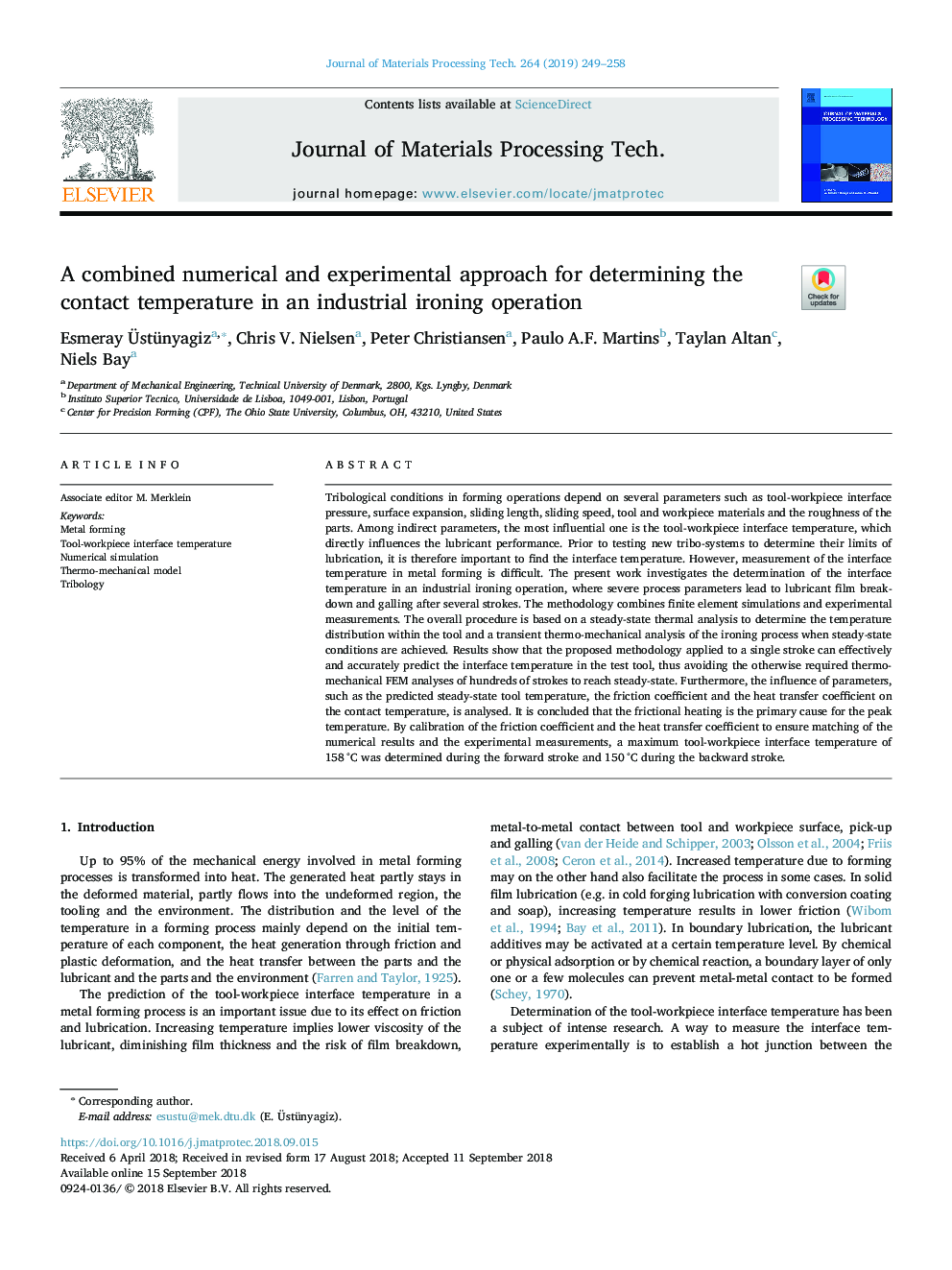| کد مقاله | کد نشریه | سال انتشار | مقاله انگلیسی | نسخه تمام متن |
|---|---|---|---|---|
| 11029876 | 1646413 | 2019 | 10 صفحه PDF | دانلود رایگان |
عنوان انگلیسی مقاله ISI
A combined numerical and experimental approach for determining the contact temperature in an industrial ironing operation
ترجمه فارسی عنوان
یک روش عددی و آزمایشی ترکیبی برای تعیین دمای تماس در یک عملیات اتمام صنعتی
دانلود مقاله + سفارش ترجمه
دانلود مقاله ISI انگلیسی
رایگان برای ایرانیان
کلمات کلیدی
تشکیل فلز دمای رابط ابزار قطعه کار، شبیه سازی عددی، مدل حرارتی مکانیکی، تردید
موضوعات مرتبط
مهندسی و علوم پایه
سایر رشته های مهندسی
مهندسی صنعتی و تولید
چکیده انگلیسی
Tribological conditions in forming operations depend on several parameters such as tool-workpiece interface pressure, surface expansion, sliding length, sliding speed, tool and workpiece materials and the roughness of the parts. Among indirect parameters, the most influential one is the tool-workpiece interface temperature, which directly influences the lubricant performance. Prior to testing new tribo-systems to determine their limits of lubrication, it is therefore important to find the interface temperature. However, measurement of the interface temperature in metal forming is difficult. The present work investigates the determination of the interface temperature in an industrial ironing operation, where severe process parameters lead to lubricant film breakdown and galling after several strokes. The methodology combines finite element simulations and experimental measurements. The overall procedure is based on a steady-state thermal analysis to determine the temperature distribution within the tool and a transient thermo-mechanical analysis of the ironing process when steady-state conditions are achieved. Results show that the proposed methodology applied to a single stroke can effectively and accurately predict the interface temperature in the test tool, thus avoiding the otherwise required thermo-mechanical FEM analyses of hundreds of strokes to reach steady-state. Furthermore, the influence of parameters, such as the predicted steady-state tool temperature, the friction coefficient and the heat transfer coefficient on the contact temperature, is analysed. It is concluded that the frictional heating is the primary cause for the peak temperature. By calibration of the friction coefficient and the heat transfer coefficient to ensure matching of the numerical results and the experimental measurements, a maximum tool-workpiece interface temperature of 158â°C was determined during the forward stroke and 150â°C during the backward stroke.
ناشر
Database: Elsevier - ScienceDirect (ساینس دایرکت)
Journal: Journal of Materials Processing Technology - Volume 264, February 2019, Pages 249-258
Journal: Journal of Materials Processing Technology - Volume 264, February 2019, Pages 249-258
نویسندگان
Esmeray Ãstünyagiz, Chris V. Nielsen, Peter Christiansen, Paulo A.F. Martins, Taylan Altan, Niels Bay,
